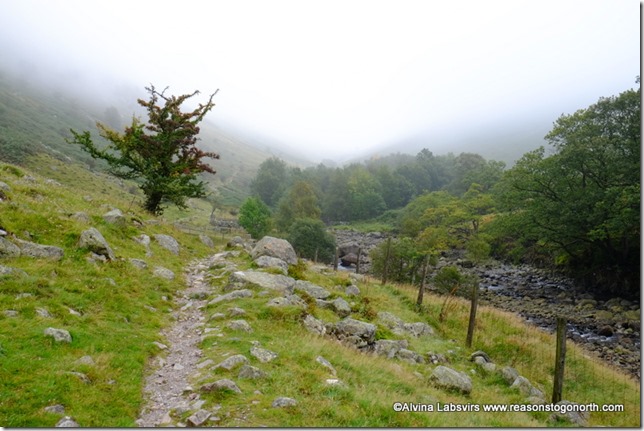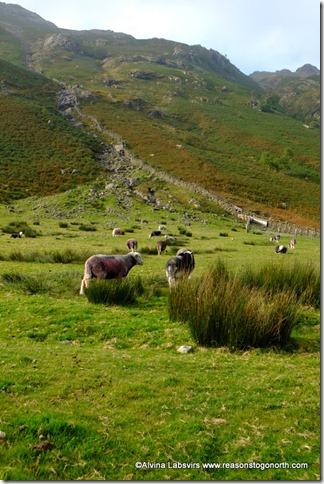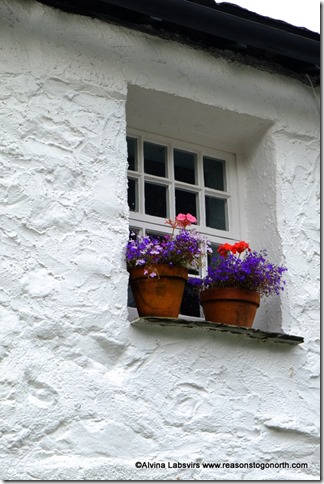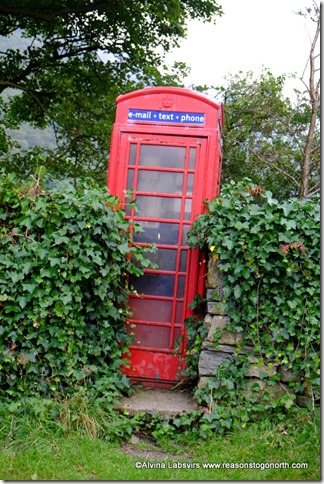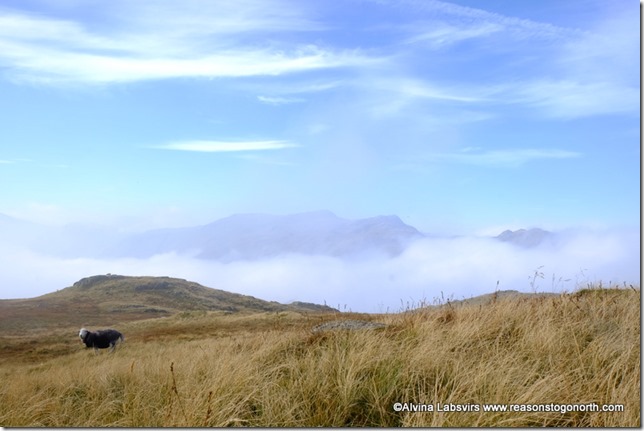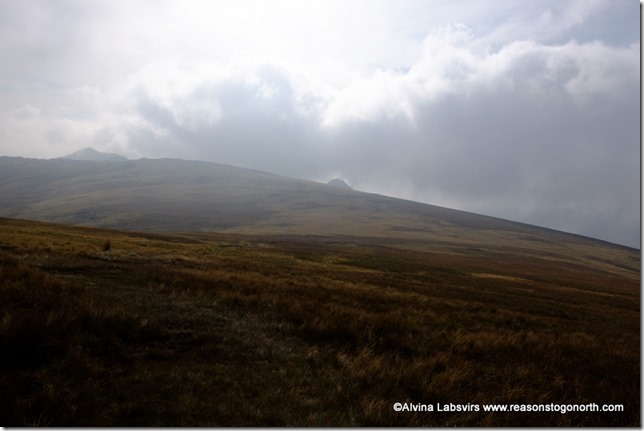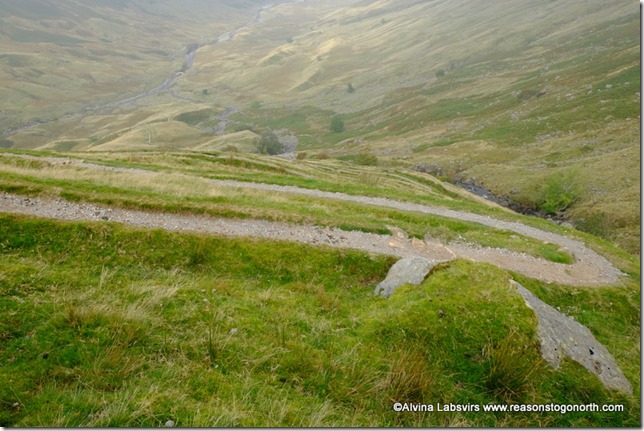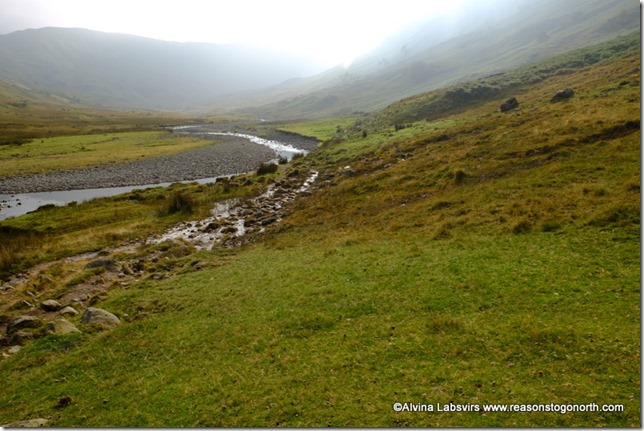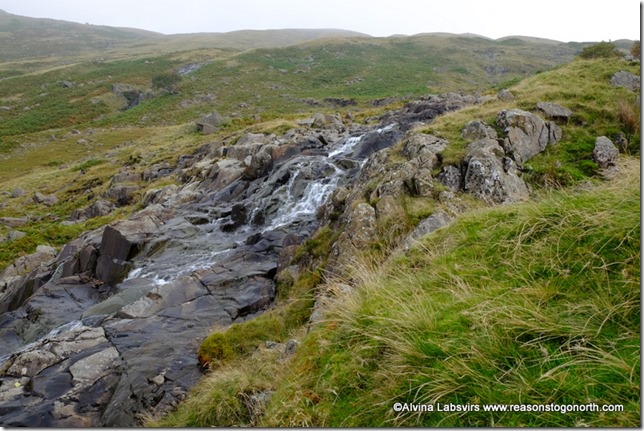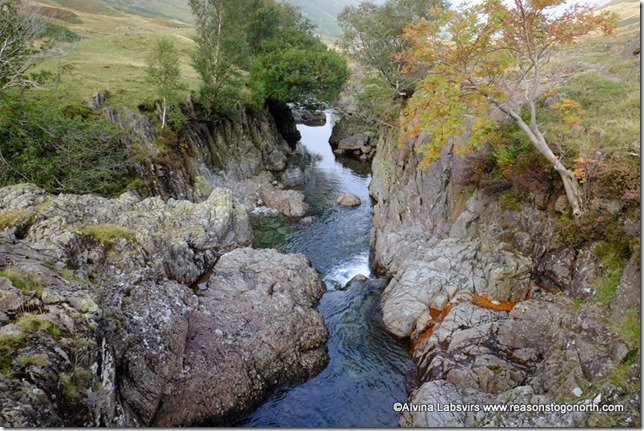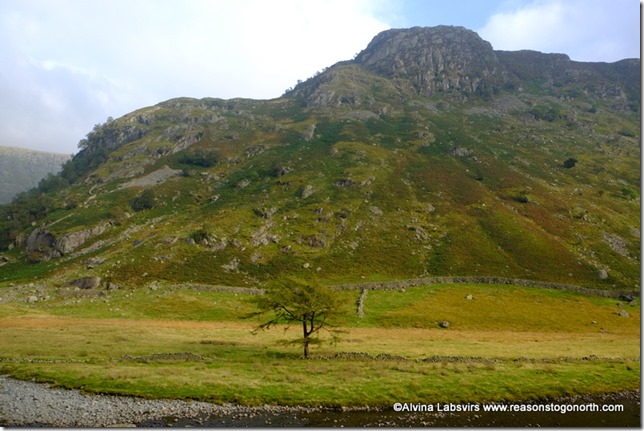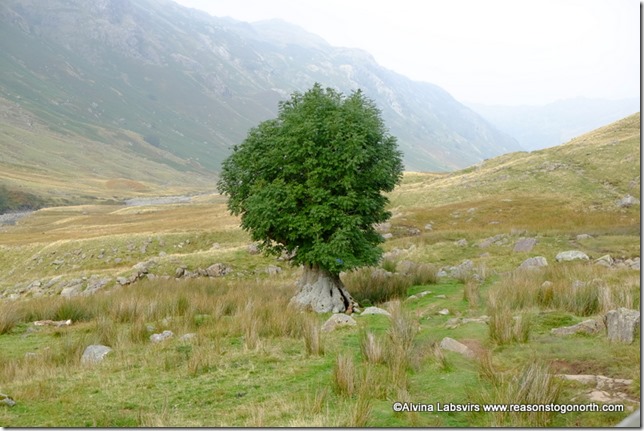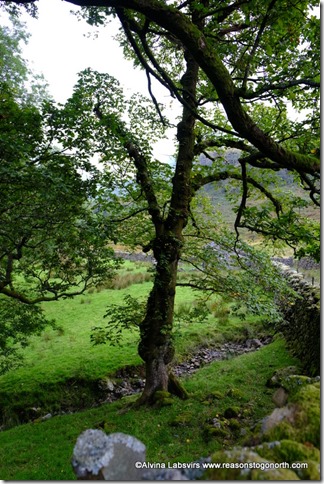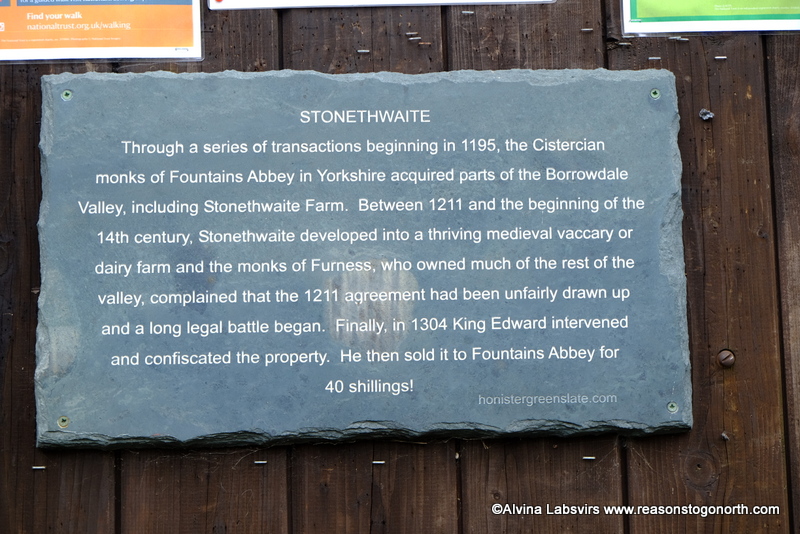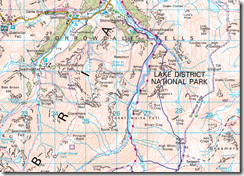Langstrath Valley
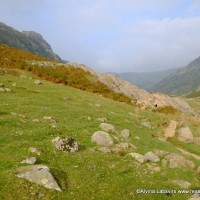
Ancient routes criss cross the fells. From Langdale to Borrowdale. The Cumbria Way traces through, up and over Stake Pass between Mickelden and Langstrath.
I’ve trudged down Mickelden many times. In sun and snow, summer winter, even the dark on returning from a long winter’s day on Bow Fell. But I’ve never walk down Langstrath Valley.
I’ve skirted round it and peered down from Eagle Crag and up from where the Beck joins Greenup Gill.
A previous obsession with walking over Wainwrights dominated all routes.
How many could I walk over in a day.
Why walk down a valley when there were more tops to tick?
Stonethwaite the starting point on a misty morning. I wonder what the monks of Fountains Abbey would think of the tramp of so many feet through their dairy farm.
No trace of cows now, just Herdies.
Though it does retain a some sense of isolation. No phone signal here. Just a bright red box.
But short of walking up the valley and back down, taking a hill or two on the way a slightly more interesting way to reach the pass.
There wasn’t a lot to see on Eagle or Sergeants Crags, but heading to High Raise wind starting to play with the cloud. Fells appeared as cloud sank into the valleys.
Into the valley. Not too promising.
Thankfully the sun crept in and the hazy light strengthened, picking out the drumlin’s ups and downs as I hair-pinned down Stake Pass; terraced as carefully as a rice paddy.
Gorged wide by ice, the remaining stream is dwarfed. Fed from a web of tributaries it tumbles and winds along the valley.
Funnelled into the hidden Blackmoss Pot. Perfect for a swim on a warmer day.
With paths either side of the beck it would be easy to take an easy walk up the valley, to watch, or swim or just be there.
One day, may be.
Oh, and I learned a little about trees.
This, wonderful old tree is probably around 600 years old. It has been pollarded by a method introduced by the Vikings. Chopped off to use of firewood and fodder for live stock.
The sheltered and isolated valleys still have the odd elm which has escaped disease and that larch trees are not native to the UK. Thanks Ben.
And finally..a little history.

